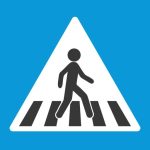Online Shopping Addiction and Compulsive Buying

In a massive new essay for the journal, Nature, award-winning science journalist Emma Marris shows how online retailers are using lessons learned from online gaming and online gambling to addict customers to online shopping.
Emma Marris is the Rachel Carson award-winning author of Wild Souls and Rambunctious Gardening and a frequent contributor to The New York Times, The Atlantic, National Geographic and many other publications.
In her piece for Nature, Marris goes around the world examining studies on compulsive shopping. She begins her tour in China, “which might have the highest prevalence of the condition ever recorded,” writes Marris. She interviews Dr. Heping He at Shenzhen University, about “the brain pathways involved and how compulsive shopping relates to similar types of conditions.”
The twist here is that Dr. He is not a neuroscientist — he’s a marketing researcher. Dr. He’s publications at ResearchGate are all about understanding how consumers purchase online, including one-click shopping, shopping cart use, shopping cart abandonment, and what drives compulsive buying.
What drives compulsive buying is, no surprise, the internet. More specifically, smartphone shopping is a major driver of compulsive buying. It allows problem purchasers to more easily hide their addiction. A compulsive shopper interviewed by Marris does almost all her shopping online, racking up tens of thousands of dollars in debt that she tries to hide from her family.
Marris turns to a familiar source in her effort to understand compulsive shopping: Dr. Anna Lembke, professor of Psychiatry and Behavioral Sciences at Stanford University and author of the blockbuster book, Dopamine Nation. Dr. Lembke explains the dopamine rush that comes from hitting that “Buy” button: “It changes their brains.”
The brain research takes Marris to Cologne, Germany, where Dr. Patrick Trotzke, a researcher at Charlotte-Fresenius Psychology University, is the lead author on a paper, “Pathological buying online as a specific form of internet addiction.” The article is based on a study of 240 adult women, aged 18-64, recruited at the University of Duisburg-Essen. The reason only women who had purchased online were recruited is “we used online shopping pictures that were selected specifically for women.”
Dr. Trotzke attempted to measure cue-sensitivity in relation to compulsive shopping behavior. He started with the Short Internet Addiction Test modified for online shopping. The 12-question test is used to diagnose internet addiction, gaming addiction, and gambling addiction. The Compulsive Buying Scale is a seven-question diagnostic for pathological buying. The researchers added 15 of their own questions as to motivations and methods of online buying.
After initial screening, participants were shown “distal and proximal” images of cues, including housewares, cosmetics, clothes, shoes, books, jewelry, leatherware, CD/DVDs, as well as cover pages of online shopping sites, shopping cart symbols, and payment buttons. “[P]articipants had to rate these cues with respect to arousal and urge to buy on a five-point rating scale ranging from 1 (not at all) to 5 (very).”
The results “[…] revealed an increase in craving after the picture presentation, for the individuals scoring high for online [pathological buying], whereas no changes were observed for individuals scoring low.” Leading researchers to conclude:
[W]e argue for a potential consideration of online [pathological buying] within the diagnostic category of non-substance/behavioral addictions.
Dr. Trotzke did a followup study with 18 participants who were undergoing treatment for compulsive shopping. This time he conducted fMRI scans while patients looked at pictures of online shopping sites and merchandise. The patients’ dopaminergic reward system was “on fire,” Trotzke told Marris.
Lembke put the consequences of compulsive buying in more practical terms:
Some people have a bit of a shopping problem and other people end up with very severe addictions where they go into huge financial debt and they lose their primary relationship.
Compulsive shoppers are ashamed of their behavior and try to hide it. They cannot help themselves. They sink into debt, have trouble sleeping, jeopardize their employment, destroy personal relationships, often ending in bankruptcy and, unfortunately, suicide. They are often not screened properly or referred for treatment because the condition is not yet recognized as a behavioral disorder, complicating insurance coverage.
What are online shopping sites doing about this problem? They are increasing their efforts to find and target compulsive shoppers, while grooming non-compulsive shoppers through a form of conditioning learned from the online gaming and online gambling companies.
Marris next takes us to the University of Lausanne in Switzerland, where researchers are looking at the role of website design in compulsive buying. Marris summarizes the work:
[…] many of these features — such as integration of shopping with social media, reward points for purchases, roulette wheels of deals and discounts, countdown timers that create time pressures to buy and apps that allow shoppers to pay in installments — can erode self-control in susceptible individuals.
The researchers cite the increasing use of loot boxes which shoppers purchase and which contain unknown valuable rewards. The rewards can be used to make in-store purchases. The process resembles a closed loop gambling circuit that quickly hooks those susceptible to these tricks. The European Commission is now investigating online shopping supersite, Temu, and other shopping sites for the possible “addictive design” of the stores.
For those who may suffer from compulsive buying disorder, there is a lot of help available, even if it isn’t officially a behavioral disorder. The Addiction Center has a good list of the resources for online shopping addiction. Also, many of the therapies recommended for gambling addiction are believed to be effective for shopping addiction, including, interestingly, GLP-1 receptor agonists such as Ozempic, Wegovy, Mounjaro, and Zepbound.
Written by Steve O’Keefe. First published March 13, 2025.
Sources:
“The science of shopping addiction: what makes people buy loads of stuff?,” Nature, March 4, 2025.
“Pathological buying online as a specific form of internet addiction: A model-based experimental investigation,” PLOS One, October 14, 2015.
“Buying-shopping disorder — is there enough evidence to support its inclusion in ICD-11?,” CNS Spectrums, January 2019.
Image Copyright: lightfieldstudios.
